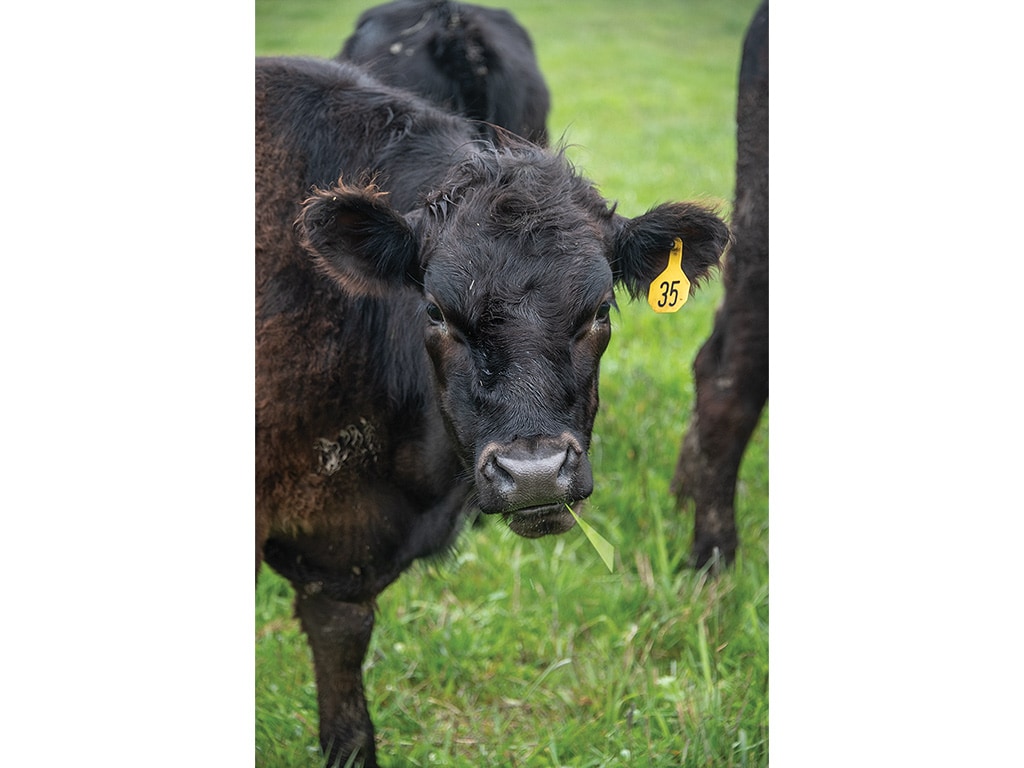Agriculture, Livestock/Poultry November 01, 2023
On a New Diet
.
Grazing brassica and legume cover crops requires a little planning.
Diverse blends of cover crops can help boost soil health, providing a balanced diet to countless beneficial microbes. They can also play the same role for livestock, notes Don Wirth, a farmer and cattle producer in Tangent, Oregon. As founder of Saddle Butte Ag, a supplier of forage and cover crop seed, Wirth has spent decades studying a wide range of plants around the world for their impacts on both land and animals.
Some species take a little getting used to, he notes. For instance, cattle may need to be introduced to fodder beets so they learn to seek out the bulbs. And though sheep do fine right from the start on a diet heavy in brassicas, cattle need a slower introduction to get their rumens acclimated to the sulfur-rich vegetation.
Much of the art of blending crops for good grazing revolves around matching species to soils, climate, livestock, and management style, Wirth adds. With some crops, there can even be regulatory considerations.
"I'm really high on chicory and buckhorn plantain, but unfortunately, buckhorn plantain is a noxious weed in about 35 states," he points out with a frown.
Undeterred by plantain's notoriety—most online articles on it focus on control, not cultivation—and chicory's lack of popularity in North America, Wirth believes they boost animal health and help control liver flukes and intestinal worms. He's especially interested in studying inulin, a compound in chicory that can aid in digestion and lactation in cattle.
Above. Don Wirth is a careful observer of livestock grazing behavior and a curious investigator of the value various species deliver to forage blends. One of Wirth's steers enjoys a tasty bite chosen from a diverse stand.
Observation. Wirth has compared notes with Blake Vince, who grazes cow/calf pairs and bulls in the spring on cover crops in his corn, soybean, and wheat rotation near Merlin, Ontario.
Grazing cover crops is a win-win for Vince and a cattleman from a few hours' drive north who sought out some of Vince's cover crop hay to make up for lost grazing opportunities. Now he trucks his cattle down for the spring, giving Vince a long-awaited chance to integrate cattle into his operation.
Vince puts them out on the hardy species that made it through the Ontario winter. Hairy vetch—which he says rivals alfalfa for protein, digestibility, and palatability—cereal rye, crimson clover, volunteer wheat, and sometimes kale create a diverse mix for his guest Herefords to browse.
Vince pays careful attention to when he moves cattle from one 1.5 to 2.5 acre paddock to the next.
"I try to rotate the cattle at the end of the day, when you have high brix and the plants are dry," Vince says. "I've heard you could have problems with bloat if the plants are dewy. I think the cattle gorge themselves."
In the evening, cattle don't go into a new field hungry, Vince points out. Instead, they are more selective about what they start on.
"They'll even be grazing in the dark," Vince notes. "I've watched them. I love going out there in the quieter parts of the evening and just watching them. What do they forage first? What are they taking down? How's their manure look?"
Wirth is a careful observer, too. What he's seen convinced him that mixed swards offer animals the chance to pick the plants they crave, just like people sometimes ache for a salad some days and a rich, juicy burger on others.
"I think the animals know what they need," Wirth notes. ‡
Read More

RURAL LIVING
Tisher's Treasures
This South Dakota farm museum is a living rural history lesson.

AGRICULTURE, SPECIALTY / NICHE
Do You Know Where Tequila Comes From?
Spoiler: The distilled sugar does not come from agave leaves.



